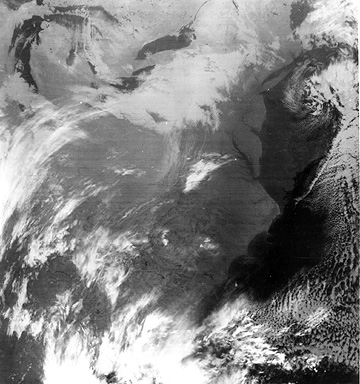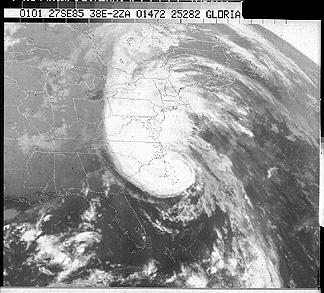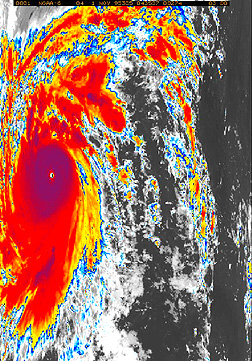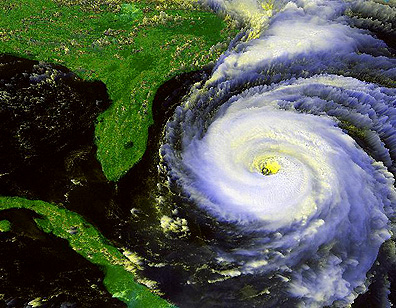

A new series in this generation began with the launch of TIROS-N on October 13, 1978. This was the first to carry the AVHRR (described on p.14-2), along with the first sounder, TOVS (TIROS Operational Vertical Sounder) designed to profile temperature and water vapor. TOVS is actually a three instrument complex: HIRS-2 (High Resolution IR Sounder), with 20 channels; SSU (Stratospheric Sounding Unit), with 3 channels near 15 µm, and the MSU (Microwave Sounding Unit), a passive scanning microwave spectrometer with 4 channels in the 5.5 µm interval. These instruments are the mainstays of the subsequent NOAA-6 (launched on June 27, 1979) through NOAA-14 (December 30, 1994) metsats; the SBUV is also part of NOAA-9 and NOAA-11. Even-numbered NOAA metsats have North to South equatorial crossing times near 7:30 A.M. and have orbit repeat periods (re-occupy approximately the same paths) of 4 to 5 days; the odd-numbered ones cross N-S at night (2:30 A.M.) and have 8-9 day repeat periods.
Here is a NOAA-9 AVHRR image in the visible of Hurricane Gloria
as it neared the East Coast on September 27, 1997:

A NOAA-6 IR image, in which lighter tones are color-enhanced to
bring out details, of Super Typhoon Angela in the western Pacific
shows its status on November 11, 1995:

Like most multi-channel systems, different AVHRR bands can be
combined into color composites, as demonstrated by this rendition
of Hurricane Fran on September 4, 1996:

The Soviet Union/CIS has sent up more than 25 polar-orbiting metsats in its three Meteor Series, starting in March of 1969 and continuing through 1994. Other metsats were included in their Kosmos series.
Code 935, Goddard Space Flight Center, NASA
Written by: Nicholas M. Short, Sr. email: nmshort@epix.net
and
Jon Robinson email: Jon.W.Robinson.1@gsfc.nasa.gov
Webmaster: Bill Dickinson Jr. email: rstwebmaster@gsti.com
Web Production: Christiane Robinson, Terri Ho and Nannette Fekete
Updated: 1999.03.15.